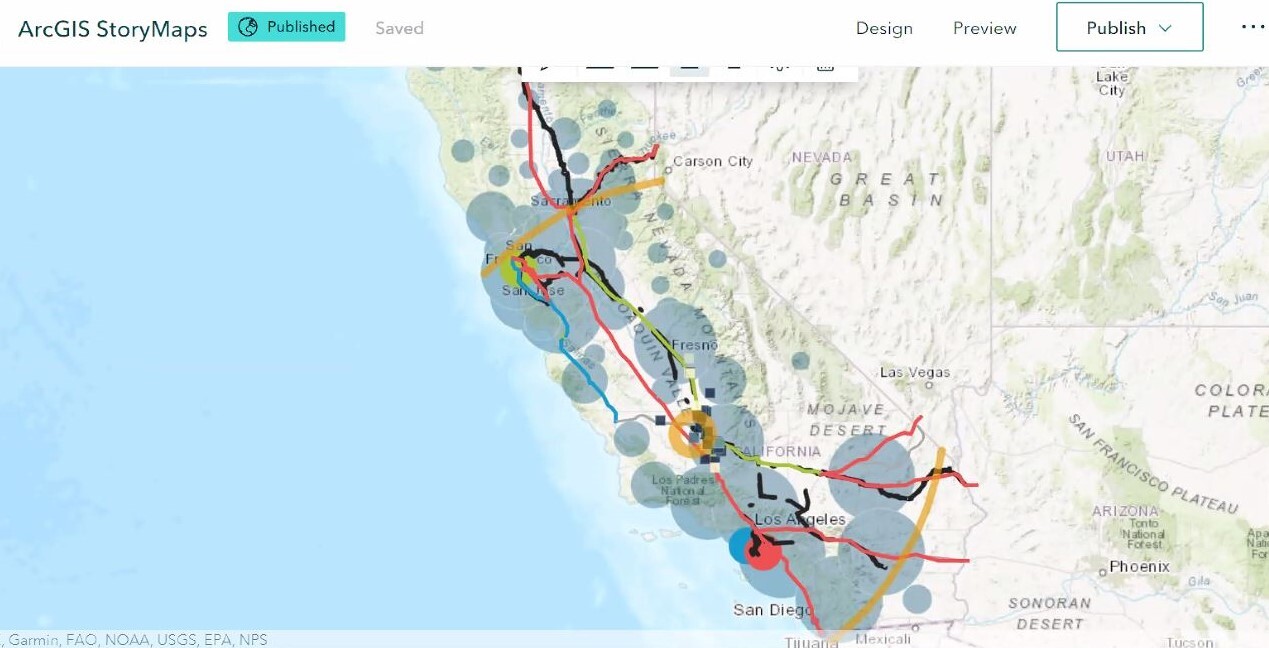News | METRANS, CITT, and Caltrans Collaborate: 2020 Caltrans Freight Academy
Stop the VideoNews

METRANS, CITT, and Caltrans Collaborate: 2020 Caltrans Freight Academy
Tuesday, January 26, 2021
Last December, the METRANS Transportation Center in partnership with the CSULB Center for International Trade and Transportation (CITT) hosted the 2020 Caltrans Freight Academy, an annual professional training workshop offered to employees of the California Department of Transportation (Caltrans) to help the state’s planners and engineers connect the dots between freight operations and transportation planning. Providing key information about current freight trends, the training offered insight into the logistics and freight industry.
Caltrans’ relationship with METRANS has led to numerous partnerships in events, workshops, and research that mutually benefit transportation researchers and professionals on a state and local level. The Caltrans Freight Academy’s focus is capacity building for transportation professionals. This year, due to pandemic concerns, the event was redesigned for an online environment. “While the COVID-19 pandemic required us to transition to an online distance-learning format, the workshop proved very successful,” said METRANS Deputy Director Tom O’Brien. “We provided a meaningful digital educational experience for more than 80 participants from across the state.”
The 2020 Freight Academy was a five-day workshop, consisting of presentations from goods movement professionals and subject matter experts, daily activities to supplement the instruction, and a final group presentation on regional freight issues using a Web-based geospatial presentation platform. In response to COVID-19 and its impacts on local and global supply chains, the workshop focused on “Freight and Communities” and addressed the topics of:
- Macroeconomic Trends Impacting Supply Chains/Freight System Disruptions;
- Measuring Freight Impacts;
- Freight Planning at the Federal, State and Regional levels; and
- Using and Visualizing Freight Data.
The speakers included Alison Conway, Associate Professor at The City College of New York; Terry Bills, Global Transportation Industry Director at Esri; and Daniel Gardner, Trade Facilitator Co-founder and global trade executive. One interesting element of the workshop was the inclusion of speakers from other states’ freight planning sectors. In a dynamic roundtable Craig Hurst of Colorado DOT, Caroline Mayes of Texas DOT, Makaela Niles of Massachusetts DOT, and Elisha Wulff of Michigan DOT shared insights into best practices used throughout the country that might be beneficial to future California planners.
The 2020 Freight Academy asked participants to apply the skills learned in the training to a regional freight problem involving either agricultural “cold chains” in California’s Central Valley or one of the more unique freight challenges, the transport of wind turbines through the Port of San Diego and onto the local and regional road network. The final project was the development of a presentation for a hypothetical meeting of the California Freight Advisory Committee (CFAC) meeting on regional freight needs in which students explained the importance of the topic and how it should be addressed in an update of the California Freight Mobility Plan (CFMP).
Presentations featured geospatial analysis which allowed students to practice their developing GIS skills. Throughout the final day of preparation for the presentations, CITT’s GIS team acted as tutors, working with each group and assisting with any questions or concerns that arose. With the help of these experienced GIS tutors, the day ended with the groups producing and presenting well-organized Story Maps.
Understanding its role in statewide freight planning, Caltrans seeks to address the need for department staff to remain up to date on current trends and issues affecting the movement of freight throughout California. The Caltrans Freight Academy provides supplemental instruction on such trends and issues, equipping transportation professionals to respond to the rapidly changing industry and to be better prepared to design the systems on which it moves.

News Archive
- December (1)
- November (6)
- October (4)
- September (2)
- August (3)
- July (4)
- June (3)
- May (7)
- April (8)
- March (11)
- February (8)
- January (7)
- December (7)
- November (8)
- October (11)
- September (11)
- August (4)
- July (10)
- June (9)
- May (2)
- April (12)
- March (8)
- February (7)
- January (11)
- December (11)
- November (5)
- October (16)
- September (7)
- August (5)
- July (13)
- June (5)
- May (5)
- April (7)
- March (5)
- February (3)
- January (4)
- December (4)
- November (5)
- October (5)
- September (4)
- August (4)
- July (6)
- June (8)
- May (4)
- April (6)
- March (6)
- February (7)
- January (7)
- December (8)
- November (8)
- October (8)
- September (15)
- August (5)
- July (6)
- June (7)
- May (5)
- April (8)
- March (7)
- February (10)
- January (12)















